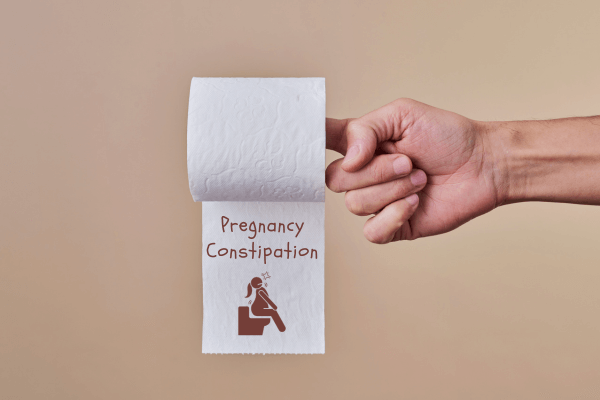Introduction
If you are expectant parents deciding between a normal vaginal birth and C-section, then understanding the pros and cons of these methods is essential. Factors such as medical history, existing health conditions, previous childbirth experiences, and personal preferences can influence the choice between natural or vaginal birth and C-section. By weighing these factors carefully, you can make a decision that prioritizes the well-being of both you and your baby.
In this blog, we will compare vaginal birth with C-section, delving into parameters such as recovery time, potential risks, pain management options, and long-term implications for future pregnancies. By gaining a comprehensive understanding of both methods, you will be better equipped to make an informed decision that suits your unique circumstances.
What is Vaginal Birth?
Vaginal birth or vaginal delivery, is the most common method of childbirth for pregnant individuals. It involves the baby passing through the birth canal and being born through the mother’s vagina. Vaginal birth is a natural and physiological process, typically requiring less medical intervention compared to cesarean sections. In this approach, mothers actively engage with their body’s natural capabilities, establishing a strong connection with their baby throughout labor. This method is able to leverage the mother’s hormonal interplays and natural coping mechanisms to manage pain and facilitate labor. Vaginal birth usually allows for easy access to immediate mother-baby bonding opportunities and breastfeeding right after birth.
Benefits of Vaginal Birth
- Immediate contact with the baby: One of the paramount advantages of a vaginal birth is the opportunity for skin-to-skin contact immediately after childbirth. This intimate bonding act not only strengthens the emotional connection between the mother and child, but also provides numerous health benefits to the newborn, such as stabilizing body temperature and breathing, and promoting breastfeeding.
- Shorter recovery period: The recovery period for vaginal births can take about four to six weeks. With adequate rest and nourishment, the uterus, pelvic floor, and abdominal muscles heal quicker and the mother’s body recovers faster. A C-section is a major abdominal surgery, and recovery can take longer, sometimes with lasting implications like back pain.
- Lower risk of surgical complications: A vaginal birth inherently bypasses the potential risks associated with surgeries. As a result, mothers are less likely to face complications such as infections or prolonged postpartum pain, ensuring a smoother post-delivery phase for both the mother and the baby. Women who deliver by c-section have a higher chance of fertility issues, miscarriages, and uterine ruptures in the future as compared to their counterparts who birth vaginally.
- Better Success Rates in Breastfeeding: Breastfeeding after C-section comes with a unique set of challenges and hence Vaginal birth has been associated with higher success rates in breastfeeding. Vaginal birth triggers release of specific hormones, like oxytocin, that help stimulate uterine contractions and milk ejection reflexes and also promote bonding. Immediate skin-to-skin contact helps the baby latch onto the breast sooner and promotes successful breastfeeding initiation. Babies born vaginally often have a more alert and active state allowing them to nurse effectively while C-section babies might be groggy from medications used during the surgery. C-sections are sometimes performed before the baby has reached full term, which can result in breastfeeding challenges. Also Recovery after a vaginal birth is generally faster and less painful than after a C-section. Mothers who have a smoother recovery are often more capable of breastfeeding comfortably.
What is a C-Section?
In a C-section, specifically the LSCS (Lower Segment Cesarean Section), the doctor makes an incision through the lower abdomen and uterus to deliver the baby. It can be done under regional, i.e. spinal block or general anesthetic. Usually the mother is awake during the entire surgery.
An elective C-section is performed at the first few signs of beginning of labor or when there are medical complications in the pregnancy which necessitates the need for surgery like in the case of certain kinds of multiples, placenta previa (where the placenta grows over the cervix), a transverse presentation (baby placed horizontally in the womb) and a previous c-section. Please do know that VBAC- Vaginal Birth After Cesarean is an option, explore it in pregnancy with your care provider. Expecting mothers can also request for their doctor to perform an elective C-section delivery after weighing in all the available options and making an informed decision. While an elective c-section procedure is an option, it is not recommended without a medical need as it is a major surgery with complications for both mother and child.
Reasons/Situations for C-section Delivery
While the benefits of vaginal delivery are often undisputed, there are certain situations where c-section delivery can be considered the only viable option. Such high-risk pregnancy scenarios include –
- Fetal distress
- Dysfunctional labor
- Infection
- Placental abruption
- Cord prolapse
- Cephalopelvic disproportion
- Uterine rupture
Benefits of C-Section Delivery
Risks and challenges of a C-section
Longer recovery period: Recovery after a c-section generally takes longer – around six to eight weeks. The recovery period often includes an extended hospital stay, adherence to numerous restrictions, and potential discomfort around the incision area.
Impact on Future pregnancies: Although women who undergo a C-section can opt for vaginal delivery in subsequent pregnancies, potential complications loom, like the scar on the womb reopening or abnormal placental attachment leading to severe repercussions.
Vaginal Birth or Cesarean Section?
While the majority of healthcare practitioners advocate for natural births due to their general safety profile and quicker recovery times, it’s crucial to acknowledge that c-sections also play a vital role in maternal and infant health. The rise in c-section rates beyond WHO’s recommended 15% highlights the complexity of the decision-making process. These choices often depend on medical, psychological, and sometimes even systemic factors.
Vaginal births offer a quicker recovery and lower risk of surgical complications, aligning more closely with biological processes. However, c-sections can be life-saving and are often medically necessitated by conditions like fetal distress or placenta previa.
Given the complexities and individual factors that come into play, the decision between a vaginal birth and a c-section should be made in close consultation with healthcare providers. This ensures that the chosen method is not only medically sound but also aligns with the mother’s personal circumstances and comfort level.
Personalizing Your Choice
- The Role of Personal Health History
Your health history is more than just a file; it’s a valuable guide to understanding how your body may react to different birthing methods. Consider factors like previous surgeries or complications in earlier pregnancies to help guide your choice between vaginal and C-section births.
- Preferences and Fears
Your emotional state plays a critical role in your birthing experience. If you have a strong preference for vaginal birth or a fear of surgical procedures, these feelings should be communicated clearly to healthcare providers to develop a birth plan that respects your wishes.
- Discuss with Healthcare Providers
A one-on-one consultation with healthcare providers such as obstetricians or midwives offers insights that generic online information can’t provide. Take this opportunity to explore any concerns or questions you have about the pros and cons of each birthing method.
By addressing these three crucial elements, you’ll be better equipped to make a childbirth choice that aligns not just with medical advisories but also with your personal comfort and well-being.
At Veira Life, we have experienced midwives and birth doulas who are well-qualified to advise you and to answer all your questions on this subject.
Conclusion
How Veira Life Guides Your Choice: Vaginal Birth or C-Section?
In the pivotal journey of parenthood, making informed decisions is paramount, especially when it comes to choosing between natural birth and a C-section. At Veira Life, we understand the gravity of this choice and its lasting impact on you and your baby’s well-being.
With our dedicated team of seasoned experts – from certified doulas to experienced midwives – we equip you with holistic knowledge, ensuring you’re well-prepared and confident in your childbirth decision. Our personalized consultations focus on your unique needs, health conditions, and preferences. We bridge the gap between medical jargon and your understanding, allowing you to make a choice that aligns with both your well-being and peace of mind.
Beyond just providing information, Veira Life stands as a pillar of unwavering support throughout your pregnancy journey. Our mission is to be there for you every step of the way, from the first trimester to postnatal care and parenting.
Embrace this transformative phase of life with Veira Life as your trusted companion. Register with us and let’s make the best choices together for you and your baby.
FAQs
For a majority of expecting mothers, vaginal birth is safer. A vaginal birth helps in cutting down the risk of complications of surgery and lowers the risk of needing a blood transfusion.
In the usual circumstances, vaginal delivery or birth, is the most preferred and common way to deliver a baby as it carries the lowest risk. It occurs most often between weeks 37 and 42 of pregnancy.
Babies born vaginally are said to have an edge over babies born via cesarean section. Babies born via vaginal birth are inoculated with bacteria from their mother’s birth canal during birthing. This helps in protecting them from asthma and other health issues. The fluid from their lungs is drained out better due to the pressures of a vaginal birth. Babies born via c-section are more prone to injuries from the surgery.
With C-section deliveries, there is increased risk of infection for the mother and baby, increased risk of injuries to the baby during delivery, increased risk of prolapse of internal organs, breastfeeding difficulties, increased risk of chronic back pain, adhesions to the bladder during the healing process, increased risk of uterine rupture especially in future pregnancies and births and increased risk to placenta (where placenta grows deeper into the wall of the uterus)
Vaginal delivery is the most common and preferred type of childbirth as it is safest for most biological women. However in some cases a c-section may be required to save the life of the mother and the baby. Instead of focusing on the type of delivery, in pregnancy, know your options, arm yourself with knowledge, find care providers who practice informed decision making, so that when your birth unfolds, it is with your consent and understanding, be it a vaginal birth or a c-section.
Babies born vaginally are said to have an edge over babies born via cesarean section. Babies are innoculated with are likely to pick up bacteria from their mother’s birth canal. This helps in protecting them from asthma and other health issues.While being born, their heads undergo significant molding and stress which helps increase their IQ. The fluid from their lungs are drained out better due to the pressures of a vaginal birth. Babies born via c-section are more prone to injuries from the surgery.







